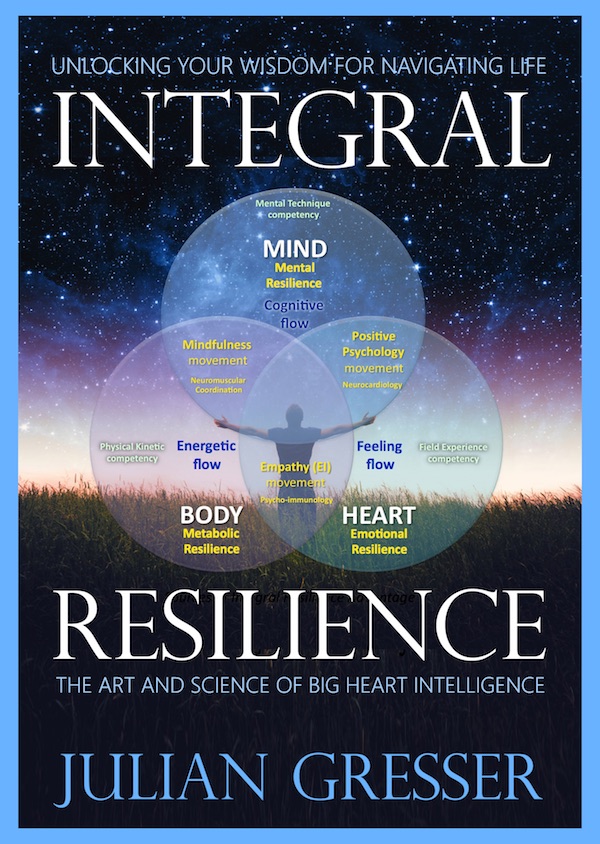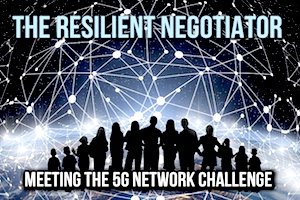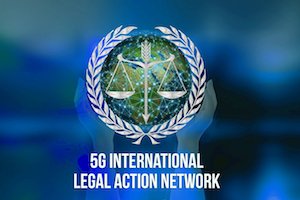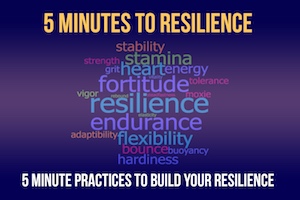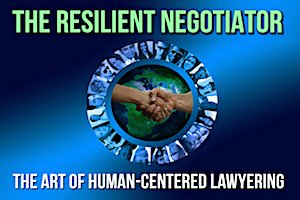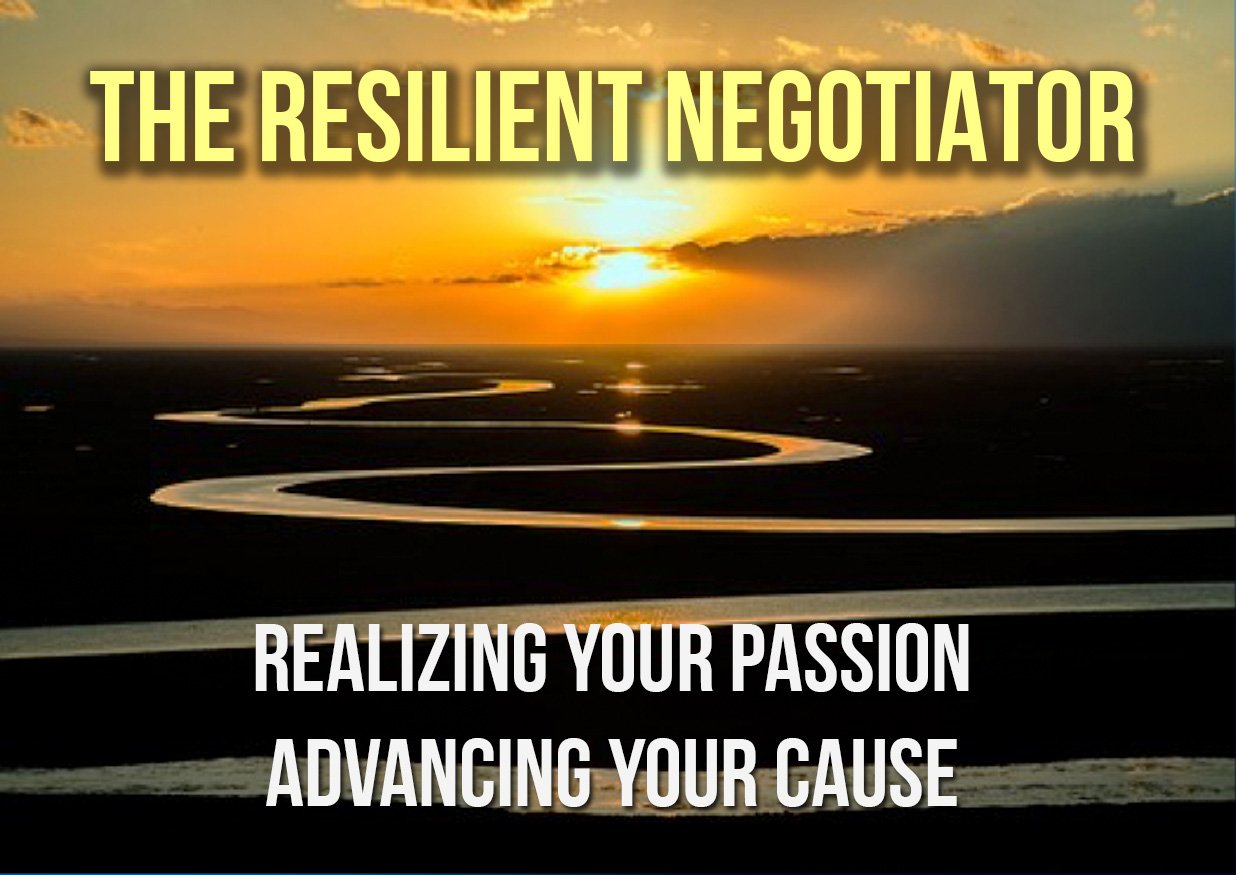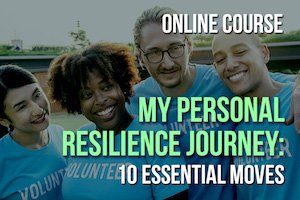Wired vs. Wireless — Camilla Rees
Reinventing Wires, (full paper here, summary press release here) a paper by Timothy Schoechle, promotes fiber optic technology over wireless, but many have asked, “well, what about when you’re not in your home?” Here are my thoughts.
People can get access on their phones when out and about with 4G now. I doubt that is going away, at least very soon. Maybe when the ecosystem, and our brains, more obviously start crashing from so much RFR, things will change, but not immediately. This might not be too many years off. But for now, I think we can assume we will have cell phones and mobile devices. But do we need or want more antennas? And, importantly, should we not be curtailing our digital activities instead of expanding them, as the “Lean ICT – Toward Digital Sobriety” report recommends? It says, about digital trends and energy use, “Major global trends of all sectors combined paint an alarming picture.” The report says the explosion of video use is a main driver of this inflation, and that the ‘digital transition’, ostensibly to dematerialize the economy and lower energy usage, “participates in global warming more that it helps preventing it”. Increasing neighborhood antennas all around us will be enabling more and more mobile video downloads and faster download speed. It is crazy to enable more of these antennas from both an energy and health perspective!
The issue at hand is the buildout of the Internet access networks in our neighborhoods, which should be done with fiber, all the way to the premises, for many good reasons. There is no good reason why internet access networks should be wireless! As Tim Schoechle explains, wireless should be viewed as an adjunct service, and only for things that move. If we can install fiber to the premises, that is what we should be using. It eliminates so many problems. Use your cell phone when out and about. We don’t need all the new bandwidth and new 5G antennas, it can be argued, unless of course the real motive is the collection and monetization of data to fuel the advertising and marketing machine, and to enable AI and pervasive surveillance.
First, we need to be asking if we want these antennas, and all the erosion in the fabric of our society that comes with them. And if not, we need to make sure they don’t happen.
Also, as Re-Inventing Wires explains, as much as 50% of all Internet traffic today is fraudulent — botnets driving up visitor stats so advertisers have to pay more. (And the advertising industry is believed to be complicit in this.) Then, after that, you’ve got the videos, i.e. entertainment, accounting for much of the rest of the usage, and higher HD video that is also not needed either. Using a phone to make calls and for texting, is one thing, a utility; but using these devices for mobile entertainment delivery is not something that is so urgent that society should be bearing these costs and risks, I would contend.
Look at the harm the dopaminergic apps are doing to people, psychologically eroding us at the core. Gravely harming a whole generation of children, preventing proper development at key stages. I think we need to be looking at all of these issues and coming up with a scenario that works from all perspectives–a more limited telecom system that addresses key utility functions and that is not embellished with capabilities that only serve the marketers, proponents of AI and transhumanism agenda (i.e. the fantasy of the merging of man and machine). And that is facilitating integration with the wireless communications from the 58,000 satellites permitted to be launched into space. The telecoms are wanting the satellites to play a much more important role in our communications system, but think of how much simpler Fiber To The Premises would be?!
We need to be asking who is all this serving, and recommend reshaping of the telecom industry to meet the market needs–and only meet the market needs, not all these other purposes that are not aligned with our values, that most people don’t want, that are harming our physical and mental health in multiple ways, requiring exponentially more energy use, and interfering with atmospheric systems! It is Business 101 to focus on meeting the market’s needs. The communications industry has become totally corrupted and lost its way, driven by multiple outside forces, known and unknown, including proponents for population reduction, directed energy weapons, and more. We need to bring the whole picture into light to find possible paths out of the darkness.
Meanwhile, I am including here key points and the recommendations from the Re-Inventing Wires Press Release, which may be of interest:
Re-Inventing Wires illuminates why:
- The Telecommunications Act of 1996 has resulted in the reconsolidation of communications monopoly providers dominated now by a “triopoly” that has come to be even more limiting and detrimental than the original AT&T Bell System monopoly.
- The privatized wireless market has failed to deliver adequate and sustainable connectivity, resulting in the U.S. falling in rank to #17 of 20 among developed countries in fixed broadband penetration as a percentage of the population.
- Only a fiber-based broadband system can overcome the access inequality and second-rate connectivity currently impeding our nation in a myriad of ways. Optical fiber technology, comprised of wires that carry data encoded on light beams, is easily capable of delivering data rates that are orders of magnitude greater than cable, DSL and wireless. Wireline stays roughly two orders of magnitude ahead, i.e. about 100 times as fast, as wireless.
- Wireless technologies are unreliable, vulnerable to security and privacy problems and prone to both latency and delay issues. Wireless provides poorer voice quality, artificial scarcity of service, unnecessarily high costs to the public, and, importantly, negative economies for speed. Due to collusion among dominant incumbent providers, the nation is now left with expensive, second-rate wired services for the rich, expensive, second-rate wireless services (or no service at all) for those who cannot afford wires, and no national effort to pursue advanced fiber networks that are being readily adopted by the rest of the world.
- Local communities must build and finance broadband fiber networks, in the same way that state and local governments provide schools, streets, bridges, water systems, sewers and libraries. Fast, reliable internet access has taken on the same importance as other basic needs. States and cities must lead the way to a reliable, safe, resilient, energy efficient and affordable “information highway”. High-speed fiber networks should be funded by public funds, taxes, municipal bonds and grants from governments and foundations, not by private business with commercial conflicts of interest.
- Copper wires have a very important role to play in extending fiber optic networks to the home, and tax-payer funded copper wire infrastructure should not be dismantled. The rhetoric about copper being “obsolete” is propaganda promoted by wireless carriers. New technologies such as VDSL and G.fast allow the older copper phone wires to outperform wireless and deliver fast gigabit data and also DC power, as well as in some cases achieving capabilities comparable to, or surpassing in some respects, optical fiber. Dismantling decades of investment in copper wires in the U.S. only serves the ambitions of the wireless companies, and should be prohibited.
- The price of fiber build out in the U.S. may not be as high as represented when the performance improvements in both new and legacy copper and fiber are considered. A hybrid solution may be possible based on a fiber backbone with tails of copper, coax, and fixed wireless, especially if synergies with electric power system upgrades are factored in.
- The National Broadband Plan (NBP) (FCC, 2010), an exhaustive report by the FCC that was to lay out a path to national broadband access, overstated the costs for fiber using the assumption of 100% penetration by new fiber, and then tried to justify a cheaper approach using wireless.
- Investing for the future in fiber based internet access for communities pays off, such as in Chattanooga’s cutting-edge fiber network, where the municipal broadband system cost $220 million to develop, and thus far has translated into $865 million in economic growth for the city. Longmont, Colorado’s NextLight™ municipal broadband system is barely a year old but the availability of cheap ($49/month), symmetrical, neutral and fast broadband is already proving to be a magnet for business relative to neighboring communities.
- Deployment of wired systems is being suppressed by regulatory politics and corporate business strategies that enrich the “triopoly” players Verizon, AT&T and Comcast. The triopoly has deliberately obstructed community and municipal broadband networks by sponsoring the adoption of state laws that preempt wireline competition from public municipalities.
- The cost of internet access can be significantly reduced with fiber networks. Presently, by blocking municipal fiber, but at the same time declining to build it out themselves, the dominant carriers are able to “cherry-pick” the most profitable customers and maintain artificial scarcity and high prices—while rural communities and the urban poor languish on the wrong side of the “digital divide.” Community-based fiber networks can provide lower cost, affordable services to all.
- Net Neutrality is essential. Business priorities and market power must not be permitted to preempt the public interest in the design and implementation of important basic infrastructure, thereby jeopardizing fair, equal and affordable information access for all citizens. FCC Chairman Ajit Pai, a former Verizon executive, is now calling the previous administration’s Net Neutrality common carrier policy “last century telecom regulation”. However, what he is advocating for is actually backward-looking 19th century “robber baron” monopoly deregulation.
- Wireless networks are energy guzzling and not sustainable. A wired connection (copper, DSL, cable, fiber) is the most energy efficient method to access the internet. An “explosion” in energy consumption, approaching 5–10% of world electricity supply, is now needed for the operation and manufacture of wireless infrastructure. The average iPhone, for example, uses more energy than a mid-size ENERGY STAR® compliant refrigerator, or about 361 kW-h counting wireless connections, data usage and battery charging. In the 3 years between 2012-2015 the wireless cloud increased its carbon footprint by the equivalent of adding 4.9 million cars to the road. Ironically, the global internet system is almost entirely dependent on an inefficient, polluting, and archaic energy source—coal. This irresponsible trajectory is entirely avoidable using fiber communications networks to the home.
- Universal dependence on wireless systems leave people vulnerable in the event of power grid failure. In the event of a prolonged power outage, mobile devices leave people with no service, compared to landlines with independent power sources. These can offer reliable communication even when the grid is down.
- The millions of planned 4G LTE antennas and experimental 5G millimeter wave antennas planned to be placed densely throughout metropolitan and rural neighborhoods by wireless companies in coming years, with all of the attendant risks, are not needed.
- 5G and the Internet of Things (IoT) are engines of forced obsolescence, intended to create lucrative public demand for more millions of new chips, apps, wireless devices and appliances. The Internet of Things (IoT) will also enable commercial interests to collect huge troves of data about the most intimate details of our lives, details that can be sold and/or captured by botnets. When critical systems are linked to remote actuators and/or cloud-based software, those links can become vulnerable, inadequate or inappropriate. IoT also raises many health and safety issues, such as what if a stove or oven is activated by a cell phone when something flammable is nearby? Or a hacker in China finds a way to control door locks, furnaces or the national grid system? The very concept of a wireless Internet of Things must be considered for what it is—in large part an unnecessary technology looking for a market and wireless industry cash cow.
- New USB and premises wiring and cabling technologies for inside homes and buildings provide a secure and reliable alternative to Wi-Fi and other wireless access platforms. The ideal model for a national fiber system is fiber-to-the-curb (FTTC) or fiber-to-the-home (FTTH) whereby a fiber terminates on a gateway modem box at the curb or premises where digital data is then converted to Ethernet over copper wire. This gateway can efficiently separate out and deliver TV, voice telephone and Internet service within the home. New building wiring standards eliminate the need for both millimeter wave backhaul and wasteful 5G wireless systems.
- Fiber and Energy Management Work Well in Tandem. Combining fiber access networks with local electric power distribution grids where possible enables sharing of poles and wires, and it enables control of community solar and premises solar-plus-storage. Fiber can greatly facilitate real-time energy management and it can help eliminate the high costs and reported health dangers of separate smart metering networks. Communities that already own their electric utilities will have great advantages and opportunities.
- The proliferation of frivolous wireless uses, such as gaming, entertainment-streaming and advertising is currently causing serious spectrum deficiencies. As wireless spectrum deficiencies become a greater problem, wireless providers ramp up the fight over less-desirable frequency bands. No one yet knows what will happen to wireless spectrum requirements when 50 billion IoT consumer devices are Internet-connected. The greater the battles over spectrum, the more cell sites and DAS (small cell) wireless antennas are needed to stretch the spectrum and accommodate inefficient, energy guzzling wireless services. For this reason, as well, the hard wiring alternative to wireless must be pursued.
- Wireless technologies may pose a lurking health ‘time bomb’ with wide-scale ramifications and costs, like tobacco, lead and asbestos. Presently, there are over 150 published scientific review studies, comprising thousands of studies, showing biological and health effects from electromagnetic fields. There has been little research on the biological and health effects of the planned 5G millimeter wave frequencies, and no testing of the 5G systems to be deployed, and scientists are weighing. Hard-wired internet access would eliminate these potential health effects and the associated health care costs.
- Under the influence of the wireless industry, citizens have become entangled in a perpetual quagmire of voracious advertising. The World Wide Web has become dysfunctional, vulnerable, inefficient and wasteful. Customers are inundated with “apps” that continually nudge consumers to the newest wireless thing, encourage dependence on the energy-wasting ‘cloud’ and force rapid obsolescence of both hardware and software services. There is increasing alarm over the near and long term social, cultural, and mental effects of smartphones. These risks need to be better understood before diving into massive new deployments of wireless networks and devices.
Recommendations (from “Re-Inventing Wires”)
The central conclusions of “Re-Inventing Wires: The Future of Landlines and Networks” are:
- Internet access in the United States has been hijacked by commercial interests and motivations that constrain its availability, quality, content, and media.
- High-speed optical fiber-based Internet access network should be available to every community with a direct hard-wired connection to every household and workplace.
- The Internet has become a basic public good vital to our society, and it should be available to all in a safe, reliable, fair, affordable, and energy efficient manner.
- Wireless access service is not an adequate substitute for wires, and should be considered adjunct to wired.
- So-called public-private partnerships inevitably tend to introduce inherent conflicts of interest between the public and private for-profit investors. Thus, in principle, community networks should be financed, constructed, and managed in a manner analogous to such public infrastructure as municipal water systems, sewers, streets, or libraries—keeping local governments in the driver’s seat.
Communities and policymakers must:
1. Invest in Fiber. It is recommended that communities invest in fiber to the home (FTTH), to break up the monopoly and triopoly in network provision.
- Bring the fiber as close to the user as possible.
- Take advantage of advances in wired technologies
- Revive, renew, and expand the use of a ‘copper tail’ in the access networks and within homes and buildings wherever appropriate
- Resort to wireless access only at endpoints, if at all, and primarily for things that move, or in situations where wiring is not possible or practical.
- Invest in fiber to serve the public, not with the goal of serving wireless providers and investors.
2. Defend Net Neutrality. Net neutrality is a fundamental principle and a defining issue for the future of the Internet. Business priorities and market power cannot be permitted to preempt the public interest in the design and implementation of important basic infrastructure.
3. Repeal State Laws Impeding or Preventing Municipal Broadband Networks. Private, for-profit telecommunications monopoly corporations have obstructed community and municipal broadband network initiatives and at the same time, have failed to develop such broadband, resulting in monopoly, scarcity, excessively high costs, and inferior service.
4. Combine fiber access networks with local electric power distribution grids wherever possible. Community-based and municipal electric utilities are well poised to take advantage of synergy between fiber networks and local electricity distribution grids. They are both basic public utilities. Many of the same facilities can be shared and customer relationships are already in place. Local fiber networks can enhance and speed the transition now underway to renewable, sustainable energy. Publically-owned utilities are already accustomed to financing their own capital improvements.
5. Significantly reduce energy consumption using wired rather than wireless communications technologies. Internet energy consumption is growing at an unsustainable rate, with the biggest culprits being data centers and (most significantly) wireless access networks. The main energy culprit is wireless video. A wired connection (copper, DSL, cable, fiber) is the most energy efficient method to access the network. Access through WiFi increases the energy use. However, if wireless access is made through a cellular network tower, energy use soars. Wireless traffic through 3G uses 15 times more energy than WiFi, while 4G consumes 23 times more. Also, since as much as half of Internet traffic is fraudulent, addressing the present advertising business model of the Internet is also essential. Core and access network architecture needs thorough reworking for efficiency. Distributed data centers offer another way to reduce energy usage. In spite of, and often in opposition to, the position that the cloud is energy-efficient is a body of analysis demonstrating the that the wireless network’s consumption of energy is more prodigious than commonly understood and rapidly-growing, consuming an increasing portion of global electricity supply. Consciousness about energy efficiency must be central to our information highway.
6. Rethink the Internet of Things (IoT). The principal rationale for IPv6 is fallacious. The notion that all IoT devices can or should be directly interconnected is erroneous and problematic. IPv6 deployment is in large part a solution looking for a problem and a technology looking for a market. Further, the Internet of Things is set to trigger a whirlwind of investment and connected infrastructure growth that has the massive potential to grow operational electricity use of the Internet.
7. Develop standards for privacy and security. Industry and policymakers offer lip service to privacy and security but consistently fail to make the necessary investments and implement the technological solutions required to effectively address these problems because the costs of these risks are not visible or measurable and are not borne by the designers or operators. One advantage of optical fiber based internet it is can allow for a gateway that can assure security and privacy.
8. Abandon 5G wireless as it is unneeded by the public or the market. Promotional hype surrounding 5G wireless is a technology push likely driven more by planned obsolescence and selling new generations of chips, software apps, and smartphones rather than by any demonstrated public or market need that cannot be better met by simpler and more enduring wired infrastructure or still-emerging 4G LTE technology. The promotion of 5G is likely related in large part to the industry’s incentive to reallocate and resell millimeter wave television spectrum to reap enormous revenues and profits.
9. Raise awareness of known and unknown health consequences from pervasive microwave, and planned millimeter wave, radiation. Evidence of biological and potential health effects from electromagnetic radiation emitted by wireless technologies and infrastructure is adequate to warrant a major commitment throughout the telecommunications industry to understanding these risks, and to rethinking development efforts in line with the public’s best interests.
10. Find New Business Models to Support the Internet. The advertising-based business model has invaded the Internet over the past two decades. The internet has been rendered dysfunctional, vulnerable, and inefficient, and has resulted in concentrated corporate control and influence, reversing the original concept of a decentralized, distributed, open, democratic, egalitarian network providing access to knowledge and public discourse (Perry, 2016)
11. Local Communities Must Assume Responsibility for Creating Reliable, Safe, High Speed Internet Access. The nation’s wired communication infrastructure at all levels—rural, town, city and nation—constitutes an ‘electronic commons’ that is essential to commerce, education, jobs, the economy, social cohesion, communications, and international competitiveness. This infrastructure is at risk, and popular beliefs, social forces, policy choices, and private business decisions threaten to damage this precious civic asset.


